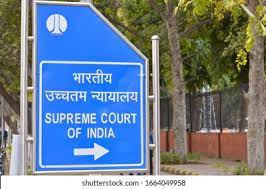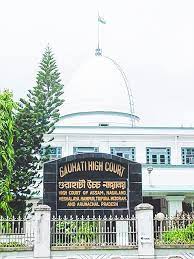Having heard the learned counsel appearing for the parties and having gone through the materials on record, the only question that falls for our consideration is whether the conviction of the appellant herein for the offence punishable under Section 304 Part I of the IPC should be further altered to Section 304 Part II of the IPC. (Para 17)
As the only argument canvassed before us is that the case does not travel beyond culpable homicide as the same falls within the third part of Section 299 of the IPC, the accused could only be said to have knowledge that he is likely by his act to cause death and not the intention to kill the deceased, we must explain the fine distinction between the terms ‘intent’ and ‘knowledge’. (Para 19)
The word “intent” is derived from the word archery or aim. The “act” attempted to must be with “intention” of killing a man. (Para 19)
Intention, which is a state of mind, can never be precisely proved by direct evidence as a fact; it can only be deduced or inferred from other facts which are proved. The intention may be proved by res gestae, by acts or events previous or subsequent to the incident or occurrence, on admission. Intention of a person cannot be proved by direct evidence but is to be deduced from the facts and circumstances of a case. There are various relevant circumstances from which the intention can be gathered. Some relevant considerations are the following: –
The nature of the weapon used.
The place where the injuries were inflicted.
The nature of the injuries caused.
The opportunity available which the accused gets.
(Para 21)
In the case of Smt. Mathri v. State of Punjab, AIR 1964 SC 986, at page 990, Das Gupta J. has explained the concept of the word ‘intent’. The relevant observations are made by referring to the observations made by Batty J. in the decision Bhagwant v. Kedari, I.L.R. 25 Bombay 202. They are as under: –
“The word “intent” by its etymology, seems to have metaphorical allusion to archery, and implies “aim” and thus connotes not a casual or merely possible result-foreseen perhaps as a not improbable incident, but not desired-but rather connotes the one object for which the effort is made-and thus has reference to what has been called the dominant motive, without which, the action would not have been taken.” (Para 22)
Thus, while defining the offence of culpable homicide and murder, the framers of the IPC laid down that the requisite intention or knowledge must be imputed to the accused when he committed the act which caused the death in order to hold him guilty for the offence of culpable homicide or murder as the case may be. The framers of the IPC designedly used the two words ‘intention’ and ‘knowledge’, and it must be taken that the framers intended to draw a distinction between these two expressions. The knowledge of the consequences which may result in the doing of an act is not the same thing as the intention that such consequences should ensue. Except in cases where mens rea is not required in order to prove that a person had certain knowledge, he “must have been aware that certain specified harmful consequences would or could follow.” (Russell on Crime, Twelfth Edition, Volume 1 at page 40). (Para 27)
This awareness is termed as knowledge. But the knowledge that specified consequences would result or could result by doing an act is not the same thing as the intention that such consequences should ensue. If an act is done by a man with the knowledge that certain consequences may follow or will follow, it does not necessarily mean that he intended such consequences and acted with such intention. Intention requires something more than a mere foresight of the consequences. It requires a purposeful doing of a thing to achieve a particular end. (Para 28)
The phraseology of Sections 299 and 300 respectively of the IPC leaves no manner of doubt that under these Sections when it is said that a particular act in order to be punishable be done with such intention, the requisite intention must be proved by the prosecution. It must be proved that the accused aimed or desired that his act should lead to such and such consequences. For example, when under Section 299 it is said “whoever causes death by doing an act with the intention of causing death” it must be proved that the accused by doing the act, intended to bring about the particular consequence, that is, causing of death. Similarly, when it is said that “whoever causes death by doing an act with the intention of causing such bodily injury as is likely to cause death” it must be proved that the accused had the aim of causing such bodily injury as was likely to cause death. (Para 30)
Thus, in order that the requirements of law with regard to intention may be satisfied for holding an offence of culpable homicide proved, it is necessary that any of the two specific intentions must be proved. But, even when such intention is not proved, the offence will be culpable homicide if the doer of the act causes the death with the knowledge that he is likely by his such act to cause death, that is, with the knowledge that the result of his doing his act may be such as may result in death. (Para 31)
The important question which has engaged our careful attention in this case is, whether on the facts and in the circumstances of the case we should maintain the conviction of the appellant herein for the offence under Section 304 Part I or we should further alter it to Section 304 Part II of the IPC? (Para 32)
We once again recapitulate the facts of this case. On the fateful day of the incident, the father and son were working in their agricultural field early in the morning. They wanted to transport the crop, they had harvested and for that purpose they had called for a lorry. The lorry arrived, however, the deceased did not allow the driver of the lorry to use the disputed pathway. This led to a verbal altercation between the appellant and the deceased. After quite some time of the verbal altercation, the appellant hit a blow on the head of the deceased with the weapon of offence (weed axe) resulting in his death in the hospital. (Para 61)
Looking at the overall evidence on record, we find it difficult to come to the conclusion that when the appellant struck the deceased with the weapon of offence, he intended to cause such bodily injury as was sufficient in the ordinary course of nature to cause death. The weapon of offence in the present case is a common agriculture tool. If a man is hit with a weed axe on the head with sufficient force, it is bound to cause, as here, death. It is true that the injuries shown in the post mortem report are fracture of the parietal bone as well as the temporal bone. The deceased died on account of the cerebral compression i.e. internal head injuries. However, the moot question is – whether that by itself is sufficient to draw an inference that the appellant intended to cause such bodily injury as was sufficient to cause death. We are of the view that the appellant could only be attributed with the knowledge that it was likely to cause an injury which was likely to cause the death. It is in such circumstances that we are inclined to take the view that the case on hand does not fall within clause thirdly of Section 300 of the IPC. (Para 62)
In the aforesaid view of the matter and more particularly bearing the principles of law explained aforesaid, the present appeal is partly allowed. The conviction of the appellant under Section 304 Part I of the IPC is altered to one under Section 304 Part II of the IPC. For the altered conviction, the appellant is sentenced to undergo rigorous imprisonment for a period of five years. (Para 63)
SUPREME COURT JUDGMENT
Citation: 2023 STPL(Web) 74 SC
ANBAZHAGAN Vs. STATE REPRESENTED BY THE INSPECTOR OF POLICE
Criminal Appeal No. 2043 of 2023 (Arising Out of S.L.P. (Criminal) No. 9289 of 2019)-Decided on 20-7-2023
Click to See Full Text of Judgment: 2023 STPL(WEB) 74 SC







